Herb and Butter Rice Pilaf is a classic dish that effortlessly combines simplicity with elegance. The richness of butter pairs perfectly with the freshness of herbs, creating a side dish that elevates any meal. This dish is beloved for its versatility, working well with a variety of cuisines, from Mediterranean to American classics. Whether served alongside roasted chicken, grilled fish, or hearty stews, its fragrant aroma and buttery texture make it a standout addition to the table.
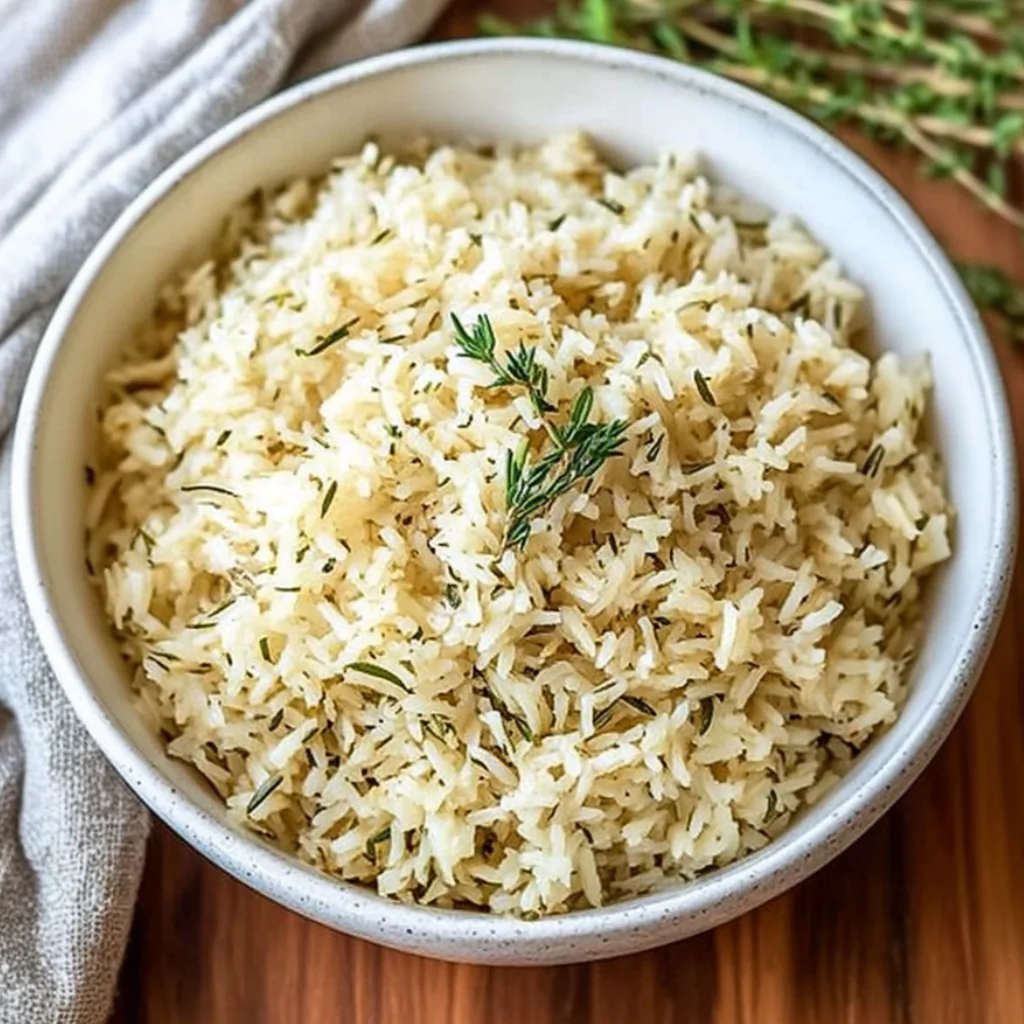
Unlike plain steamed rice, pilaf is cooked by first sautéing the grains in butter or oil, which enhances their nutty flavor and prevents them from sticking together. Fresh herbs like parsley, thyme, and dill are added toward the end of the cooking process to retain their bright flavor and color. The result is a dish that’s not only visually appealing but also deeply flavorful.
Overview of Herb and Butter Rice Pilaf
Rice pilaf is more than just a side dish; it’s a culinary tradition that has stood the test of time. What sets it apart is the cooking technique, which starts with toasting the rice in fat and then cooking it in seasoned broth. This process allows the rice to absorb all the rich flavors while maintaining its fluffy texture.
The addition of herbs and butter takes this dish to a gourmet level. Butter adds a luxurious creaminess, while fresh herbs provide a burst of freshness that balances the richness. The beauty of this recipe lies in its adaptability—whether you prefer dill, parsley, or thyme, you can customize the flavors to suit your palate.
Rice pilaf is not just versatile but also economical and easy to prepare. Its simple ingredients make it a go-to recipe for weeknight dinners, while its elegant presentation makes it suitable for special occasions. With just a few tweaks, you can transform this dish into something unique every time you make it.
Brief History and Cultural Significance
The origins of rice pilaf can be traced back to ancient Persia, where it was known as “pilav.” It was considered a luxurious dish, reserved for royalty and special celebrations. Over time, it spread across the Middle East, Central Asia, and eventually to Europe and the Americas, each culture adding its unique twist to the recipe.
In Middle Eastern cuisine, rice pilaf is often flavored with spices like cumin and cardamom, while in Indian cuisine, it’s known as “pulao” and may include nuts and dried fruits. Mediterranean versions focus on fresh herbs and olive oil, creating lighter, fresher flavors.
Herb and Butter Rice Pilaf, in particular, is rooted in Western adaptations of the traditional dish. By focusing on simple yet high-quality ingredients like butter, fresh herbs, and broth, this version of pilaf offers a more refined take on the classic recipe while still honoring its rich history.
Preparation Phase and Tools to Use
Prep Time, Cook Time, Cool Time, Total Time, Servings, and Yield
- Prep Time: 10 minutes
- Cook Time: 20 minutes
- Cool Time: 5 minutes
- Total Time: 35 minutes
- Servings: 4–6
- Yield: Approximately 4 cups of cooked rice pilaf
Essential Tools and Equipment
To prepare Herb and Butter Rice Pilaf to perfection, you’ll need the following tools:
- Heavy-bottomed saucepan or skillet with a lid: This helps distribute heat evenly and prevents the rice from burning or sticking to the bottom of the pan.
- Wooden spoon: Ideal for stirring the rice without breaking the grains.
- Fine mesh strainer: Essential for rinsing the rice and removing excess starch, which helps achieve fluffy, separated grains.
- Measuring cups and spoons: For precise measurements of rice, broth, and seasonings.
- Chef’s knife and cutting board: For chopping fresh herbs and aromatics like onions and garlic.
These tools ensure you have everything needed to execute the recipe flawlessly.
Importance of Each Tool
Each tool serves a specific purpose in making the perfect pilaf:
- Heavy-bottomed saucepan: Prevents uneven cooking and sticking, which is critical for the delicate rice grains.
- Wooden spoon: Its smooth surface protects the rice from breaking while stirring.
- Fine mesh strainer: Rinsing the rice is key to removing surface starch, which can cause clumping.
- Measuring cups and spoons: Precision is vital when it comes to the rice-to-liquid ratio for perfect results.
By using the right equipment, you’ll ensure a consistent and delicious outcome every time.
Preparation Tips
Proper preparation is the foundation of a successful rice pilaf. Here are some essential tips to follow:
- Rinse the Rice Thoroughly:
- Place the rice in a fine mesh strainer and rinse under cold water until the water runs clear. This removes excess starch and prevents the rice from becoming sticky.
- Soak the Rice (Optional):
- Soaking the rice for 20–30 minutes before cooking can help reduce cooking time and result in even fluffier grains.
- Choose the Right Broth:
- Use high-quality chicken or vegetable broth for maximum flavor. Avoid overly salty broths, as they can make the dish too salty.
- Use Fresh Herbs:
- Fresh herbs provide the best flavor and aroma. Chop them just before adding them to the dish to retain their brightness.
- Toast the Rice:
- Sautéing the rice in butter or oil before adding liquid enhances its nutty flavor and helps keep the grains separate during cooking.
Ingredients List:
Here is the complete list of ingredients needed to make Herb and Butter Rice Pilaf:
Base Ingredients
- 1 cup long-grain rice (e.g., basmati or jasmine)
- 2 cups chicken or vegetable broth
- 3 tablespoons unsalted butter
- 1 tablespoon olive oil
Herbs
- 2 tablespoons fresh parsley, finely chopped
- 1 tablespoon fresh thyme leaves
- 1 tablespoon fresh dill or cilantro (optional)
Seasonings
- ½ teaspoon salt (adjust to taste)
- ¼ teaspoon black pepper
Aromatics
- 1 small onion, finely chopped
- 2 garlic cloves, minced
These simple ingredients come together to create a rich and flavorful dish. The combination of fresh herbs, butter, and broth infuses every grain of rice with deliciousness.
Step-by-Step Instructions
Step 1: Prepare the Ingredients
- Measure and rinse 1 cup of long-grain rice under cold water until the water runs clear. Set aside to drain.
- Finely chop 1 small onion and mince 2 garlic cloves.
- Wash and chop the fresh herbs, ensuring they’re ready for the final step.
Step 2: Toast the Rice
- Heat a heavy-bottomed saucepan over medium heat. Add 3 tablespoons of unsalted butter and 1 tablespoon of olive oil.
- Once the butter melts, add the chopped onion and garlic. Sauté for 2–3 minutes until softened and fragrant.
- Add the rinsed rice to the pan. Stir continuously for 3–4 minutes, allowing the rice to toast lightly and become slightly golden.
Step 3: Cook the Rice
- Pour in 2 cups of chicken or vegetable broth. Add ½ teaspoon of salt and ¼ teaspoon of black pepper. Stir to combine.
- Bring the mixture to a boil, then reduce the heat to low and cover the pan with a tight-fitting lid.
- Let the rice simmer for 15–18 minutes, or until all the liquid is absorbed.
Step 4: Add Herbs and Finish
- Turn off the heat and let the rice sit, covered, for 5 minutes. This resting time allows the rice to finish cooking and absorb the remaining steam.
- Remove the lid and gently fluff the rice with a fork. Add the chopped parsley, thyme, and dill (if using). Stir gently to combine.
Step 5: Serve
Serve the Herb and Butter Rice Pilaf warm as a side dish, garnished with additional fresh herbs if desired. Enjoy its buttery richness and fresh herb flavors alongside your favorite main course.
Side Dish Recommendations
Herb and Butter Rice Pilaf is an incredibly versatile dish that complements a variety of main courses and cuisines. Whether you’re planning a hearty meal or a light dinner, pairing this flavorful pilaf with the right side dish can elevate your dining experience. Below are some carefully curated side dish ideas that perfectly accompany the buttery and herbaceous flavors of the pilaf.
1. Grilled Lemon Herb Chicken
The tangy brightness of lemon combined with the aromatic flavors of fresh herbs makes grilled chicken a perfect pairing for Herb and Butter Rice Pilaf. Marinate chicken breasts in olive oil, lemon juice, garlic, thyme, and rosemary, then grill until tender and juicy. The charred flavors of the chicken complement the buttery richness of the pilaf, creating a balanced and satisfying meal.
2. Baked Salmon with Garlic and Dill Butter
A simple baked salmon fillet flavored with garlic and dill butter is another excellent pairing. The richness of the salmon enhances the herbaceous notes in the pilaf, while the buttery topping ties the two dishes together. Serve with a wedge of lemon for a refreshing citrus kick.
3. Roasted Vegetables with Garlic and Olive Oil
Roasted vegetables like carrots, zucchini, bell peppers, and asparagus add a burst of color and flavor to your plate. Toss the vegetables in olive oil, garlic, salt, and pepper, then roast until caramelized and tender. The earthy flavors of the vegetables pair beautifully with the light, buttery rice.
4. Mediterranean-Style Lamb Kebabs
Lamb kebabs seasoned with cumin, coriander, paprika, and garlic are a bold and flavorful choice to serve alongside rice pilaf. The spices in the lamb bring out the subtle herbal flavors of the pilaf, making for a Mediterranean-inspired feast. Serve with a cooling yogurt sauce for contrast.
5. Pan-Seared Shrimp with Lemon Garlic Butter
For a seafood option, pan-seared shrimp coated in lemon garlic butter is a delightful choice. The shrimp’s sweet and savory flavors complement the buttery richness of the rice, while the lemon and garlic add a layer of brightness to the meal.
6. Creamy Spinach and Artichoke Dip
For a unique twist, serve the pilaf with a creamy spinach and artichoke dip. The creaminess of the dip pairs well with the fluffy texture of the rice, and the mild flavors of spinach and artichoke enhance the dish’s herbaceous profile.
7. Cucumber and Tomato Salad with Feta
A light and refreshing cucumber and tomato salad with crumbled feta cheese is an excellent way to balance the richness of the pilaf. Toss the vegetables with olive oil, lemon juice, and a sprinkle of oregano for a simple yet flavorful side.
8. Slow-Cooked Beef Stew
For a hearty pairing, serve Herb and Butter Rice Pilaf with a slow-cooked beef stew. The tender, savory beef with its rich, flavorful gravy is the perfect match for the light, aromatic pilaf. Spoon the stew over the rice for a comforting, complete meal.
Nutritional Information & Health Benefits
Herb and Butter Rice Pilaf is not only delicious but also offers several nutritional benefits, depending on the ingredients and preparation method. Here’s a breakdown of its nutritional value and how the key ingredients contribute to a balanced diet.
1. Calories and Macronutrients
- Rice: As the main component, rice is a good source of carbohydrates, which provide energy. Opt for long-grain or basmati rice, which has a lower glycemic index compared to shorter grain varieties.
- Butter: While butter contributes to the dish’s rich flavor, it also adds fats. Using unsalted butter allows you to control the sodium content of the dish.
- Broth: Using chicken or vegetable broth adds flavor without significantly increasing the calorie count. Low-sodium broth is a healthier choice.
2. Vitamins and Minerals
- Fresh Herbs: Parsley, thyme, and dill are rich in vitamins A, C, and K, as well as antioxidants that promote overall health. They also add a burst of fresh flavor without extra calories.
- Garlic: Known for its immune-boosting properties, garlic also contains manganese, vitamin B6, and vitamin C.
- Onions: Onions are low in calories but rich in nutrients, particularly vitamin C, vitamin B6, and potassium.
3. Health Benefits of Key Ingredients
- Rice: Provides sustained energy and is easy to digest. Whole-grain rice varieties like brown rice offer additional fiber and nutrients.
- Butter: A source of fat-soluble vitamins like A, D, E, and K when consumed in moderation.
- Herbs: Help reduce inflammation and promote heart health. For example, parsley is known for its diuretic properties, while thyme has antimicrobial benefits.
4. Adaptations for Specific Diets
- Low-Calorie Option: Replace butter with olive oil and use less to reduce calorie content.
- Low-Sodium Option: Use a no-salt-added broth and reduce added salt in the recipe.
- Vegan Option: Substitute butter with vegan butter or olive oil and use vegetable broth instead of chicken broth.
Common Mistakes to Avoid & How to Perfect the Recipe
Cooking rice pilaf may seem simple, but a few common mistakes can lead to less-than-perfect results. Here’s how to avoid them and ensure your pilaf turns out perfectly every time.
1. Mistake: Skipping the Rinsing Step
- Why It’s a Problem: Failing to rinse rice leaves excess starch on the grains, causing the rice to clump together during cooking.
- Solution: Rinse the rice thoroughly under cold water until the water runs clear. This removes the starch and ensures fluffy, separated grains.
2. Mistake: Using the Wrong Rice-to-Liquid Ratio
- Why It’s a Problem: Too much liquid results in mushy rice, while too little liquid leaves the rice undercooked.
- Solution: Use the standard 1:2 rice-to-liquid ratio (1 cup of rice to 2 cups of liquid) for long-grain rice. Adjust slightly for other types of rice.
3. Mistake: Overcooking or Undercooking the Rice
- Why It’s a Problem: Overcooked rice becomes mushy, while undercooked rice remains hard in the center.
- Solution: Cook the rice on low heat with a tight-fitting lid to allow it to absorb the liquid evenly. Avoid lifting the lid during the cooking process.
4. Mistake: Neglecting to Toast the Rice
- Why It’s a Problem: Skipping this step results in less flavorful rice.
- Solution: Sauté the rice in butter or olive oil before adding the liquid. This enhances its nutty flavor and improves the texture.
5. Mistake: Adding Herbs Too Early
- Why It’s a Problem: Cooking fresh herbs for too long diminishes their flavor and bright green color.
- Solution: Add fresh herbs at the very end of the cooking process, just before serving.
6. Mistake: Using Low-Quality Broth
- Why It’s a Problem: The flavor of the broth is absorbed by the rice, so a bland broth results in a bland pilaf.
- Solution: Use a high-quality, flavorful broth. Homemade or low-sodium store-bought broths are excellent choices.
7. Mistake: Not Letting the Rice Rest
- Why It’s a Problem: Skipping the resting step can result in unevenly cooked rice.
- Solution: After the cooking time is complete, let the rice sit covered for 5–10 minutes. This allows the rice to finish steaming and ensures even texture.
8. Mistake: Stirring the Rice After Adding Liquid
- Why It’s a Problem: Stirring disrupts the cooking process and can cause the rice to become mushy.
- Solution: Stir the rice only before adding the liquid. Once the liquid is added, let the rice cook undisturbed.
By avoiding these common mistakes and following the suggested tips, you’ll consistently achieve light, fluffy, and flavorful Herb and Butter Rice Pilaf every time.
Tips, Notes, Storing, and Reheating
Pro Tips for Perfect Herb and Butter Rice Pilaf
- Choose the Right Rice
- Long-grain rice varieties like basmati or jasmine work best for pilaf because they remain separate and fluffy. Avoid short-grain rice, which tends to clump together.
- Layer Flavors Strategically
- Toasting the rice in butter not only adds a nutty flavor but also prevents the grains from sticking. Be patient during this step for the best results.
- Use Fresh Herbs
- Fresh herbs bring out the most flavor in the dish. If you don’t have fresh herbs, use dried herbs sparingly as their flavor is more concentrated.
- Don’t Skip the Resting Period
- Allowing the rice to rest after cooking lets the grains settle and absorb any remaining steam, ensuring perfect texture.
- Add a Squeeze of Lemon
- A small squeeze of lemon juice before serving can brighten the flavors of the pilaf and enhance the herbal notes.
- Adjust Seasonings to Taste
- Broths vary in salt content, so always taste the pilaf before serving and adjust the seasoning as needed.
Common Variations and Additions
While the classic Herb and Butter Rice Pilaf is delicious on its own, there are several ways to customize it based on your preferences or what you have on hand:
- Add Vegetables
- Sauté diced carrots, peas, or bell peppers with the onions for a colorful and nutrient-rich twist.
- Incorporate Nuts and Dried Fruits
- For a Middle Eastern-inspired variation, add toasted almonds, cashews, or raisins to the cooked rice.
- Make It Spicy
- Add a pinch of red pepper flakes or a dash of cayenne pepper to give the pilaf a subtle kick.
- Swap Broth for Coconut Milk
- Use coconut milk instead of broth for a creamy, tropical variation of the dish.
- Use Alternative Grains
- For a healthier option, try substituting the rice with quinoa, farro, or bulgur wheat.
How to Store Herb and Butter Rice Pilaf
Proper storage is key to preserving the texture and flavor of your rice pilaf.
- Cool Completely
- Allow the rice to cool to room temperature before storing. Placing hot rice in the refrigerator can cause condensation, leading to soggy rice.
- Use Airtight Containers
- Transfer the rice to an airtight container to prevent it from drying out or absorbing odors from other foods in the fridge.
- Refrigerate
- Store the pilaf in the refrigerator for up to 4 days.
- Freeze for Longer Storage
- For longer storage, freeze the pilaf in a freezer-safe container or resealable bag. Flatten the rice in the bag to make reheating easier. It can be frozen for up to 2 months.
How to Reheat Herb and Butter Rice Pilaf
Reheating rice pilaf properly is essential to maintain its fluffy texture and fresh flavor.
- Microwave Method
- Transfer the rice to a microwave-safe dish.
- Add a tablespoon of water or broth to prevent it from drying out.
- Cover with a damp paper towel or lid and heat in 1-minute intervals, stirring between each interval until heated through.
- Stovetop Method
- Heat a non-stick skillet over medium heat.
- Add the rice and a splash of water or broth. Stir occasionally until warmed through.
- Oven Method
- Preheat the oven to 300°F (150°C).
- Place the rice in an oven-safe dish, sprinkle a few tablespoons of water or broth over it, and cover tightly with foil.
- Bake for 10–15 minutes until heated through.
FAQs Section
1. Can I use brown rice instead of white rice?
Yes, you can use brown rice for this recipe, but you’ll need to adjust the cooking time and liquid ratio. Brown rice typically requires more liquid (about 2 ½ cups for every 1 cup of rice) and a longer cooking time (around 40–45 minutes).
2. What herbs work best for rice pilaf?
The most commonly used herbs for pilaf are parsley, thyme, and dill. Other great options include chives, cilantro, or basil, depending on your flavor preferences and the cuisine you’re pairing it with.
3. Can I make Herb and Butter Rice Pilaf vegan?
Absolutely! Substitute the butter with vegan butter or olive oil, and use vegetable broth instead of chicken broth. The dish will still be flavorful and aromatic.
4. How do I prevent the rice from sticking together?
Rinse the rice thoroughly under cold water to remove excess starch before cooking. Additionally, sautéing the rice in butter or oil before adding liquid helps to keep the grains separate.
5. What can I substitute for chicken broth?
You can use vegetable broth, beef broth, or even water as a substitute. If using water, consider adding a bay leaf or a bouillon cube for extra flavor.
6. Can I prepare the pilaf in advance?
Yes, you can prepare the pilaf ahead of time and store it in the refrigerator. Reheat it using the methods outlined above. For the freshest flavor, consider adding the herbs just before serving.
7. How do I add more protein to this dish?
You can stir in cooked protein such as shredded chicken, shrimp, or chickpeas to turn the pilaf into a complete one-pot meal.
8. Can I make pilaf in a rice cooker?
Yes, you can make this recipe in a rice cooker. Sauté the rice, onions, and garlic in a skillet first, then transfer them to the rice cooker with the broth and seasonings. Cook according to the rice cooker’s instructions.
9. What’s the best type of butter to use?
Unsalted butter is ideal, as it allows you to control the salt content of the dish. If you prefer a richer flavor, you can use European-style butter, which has a higher fat content.
10. Is this dish gluten-free?
Yes, as long as the broth you use is gluten-free, Herb and Butter Rice Pilaf is naturally gluten-free. Always check the labels on packaged products to ensure they meet your dietary needs.
Conclusion
Herb and Butter Rice Pilaf is a timeless recipe that’s both simple to prepare and elegant to serve. Its combination of fluffy rice, aromatic herbs, and rich butter makes it a standout side dish for any occasion, whether it’s a casual weeknight dinner or a formal gathering. By following the tips and techniques outlined in this guide, you can achieve perfect pilaf every time and even adapt the recipe to suit your preferences.
Whether you’re pairing it with grilled meats, roasted vegetables, or a hearty stew, Herb and Butter Rice Pilaf is sure to become a staple in your kitchen. Experiment with different herbs, broths, and additions to make it your own, and enjoy the satisfaction of creating a dish that’s as delicious as it is versatile.
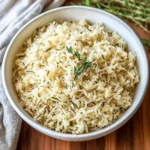
Herb and Butter Rice Pilaf
- Total Time: 35 minutes
- Yield: 4 cups 1x
- Diet: Vegetarian
Description
Herb and Butter Rice Pilaf is a fluffy, aromatic, and buttery side dish made with fresh herbs, rich butter, and perfectly cooked rice. It’s a versatile recipe that pairs beautifully with a wide range of main courses, from grilled meats to seafood.
Ingredients
- Base Ingredients
- 1 cup long-grain rice (basmati or jasmine)
- 2 cups chicken or vegetable broth
- 3 tablespoons unsalted butter
- 1 tablespoon olive oil
- Herbs
- 2 tablespoons fresh parsley, chopped
- 1 tablespoon fresh thyme leaves
- 1 tablespoon fresh dill or cilantro (optional)
- Seasonings
- ½ teaspoon salt (adjust to taste)
- ¼ teaspoon black pepper
- Aromatics
- 1 small onion, finely chopped
- 2 garlic cloves, minced
Instructions
- Rinse the Rice
- Rinse the rice under cold water until the water runs clear. Drain and set aside.
- Sauté the Aromatics
- In a heavy-bottomed saucepan, heat the butter and olive oil over medium heat. Add the onion and garlic, and sauté until fragrant and softened, about 2–3 minutes.
- Toast the Rice
- Add the rinsed rice to the pan and stir to coat each grain with butter. Toast the rice for 3–4 minutes until it smells nutty.
- Cook the Rice
- Pour in the broth and season with salt and pepper. Stir once, bring to a boil, then reduce the heat to low. Cover with a tight-fitting lid and simmer for 15–18 minutes until the liquid is absorbed.
- Rest and Add Herbs
- Remove the pan from the heat and let it sit, covered, for 5 minutes. Fluff the rice gently with a fork, then fold in the fresh herbs.
- Serve
- Serve warm, garnished with additional herbs if desired.
Notes
- For a vegan version, replace butter with vegan butter or olive oil and use vegetable broth.
- Add vegetables like peas or diced carrots for a colorful variation.
- Store leftovers in an airtight container in the refrigerator for up to 4 days.
- Prep Time: 10 minutes
- Cook Time: 20 minutes
- Category: Side Dish
- Method: Stovetop
- Cuisine: Mediterranean, Middle Eastern
Nutrition
- Serving Size: 1 cup
- Calories: 220
- Sugar: 1g
- Sodium: 400mg
- Fat: 8g
- Saturated Fat: 4g
- Unsaturated Fat: 3g
- Trans Fat: 0g
- Carbohydrates: 32g
- Fiber: 1g
- Protein: 4g
- Cholesterol: 15mg

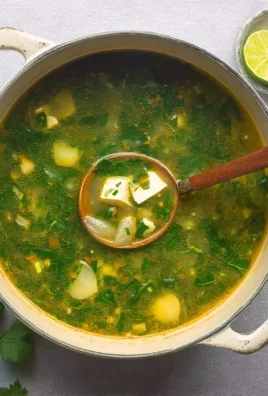
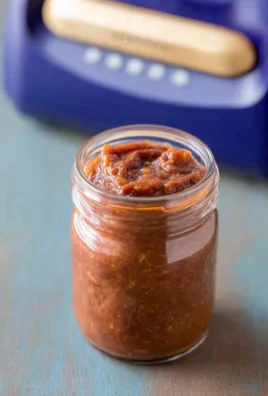
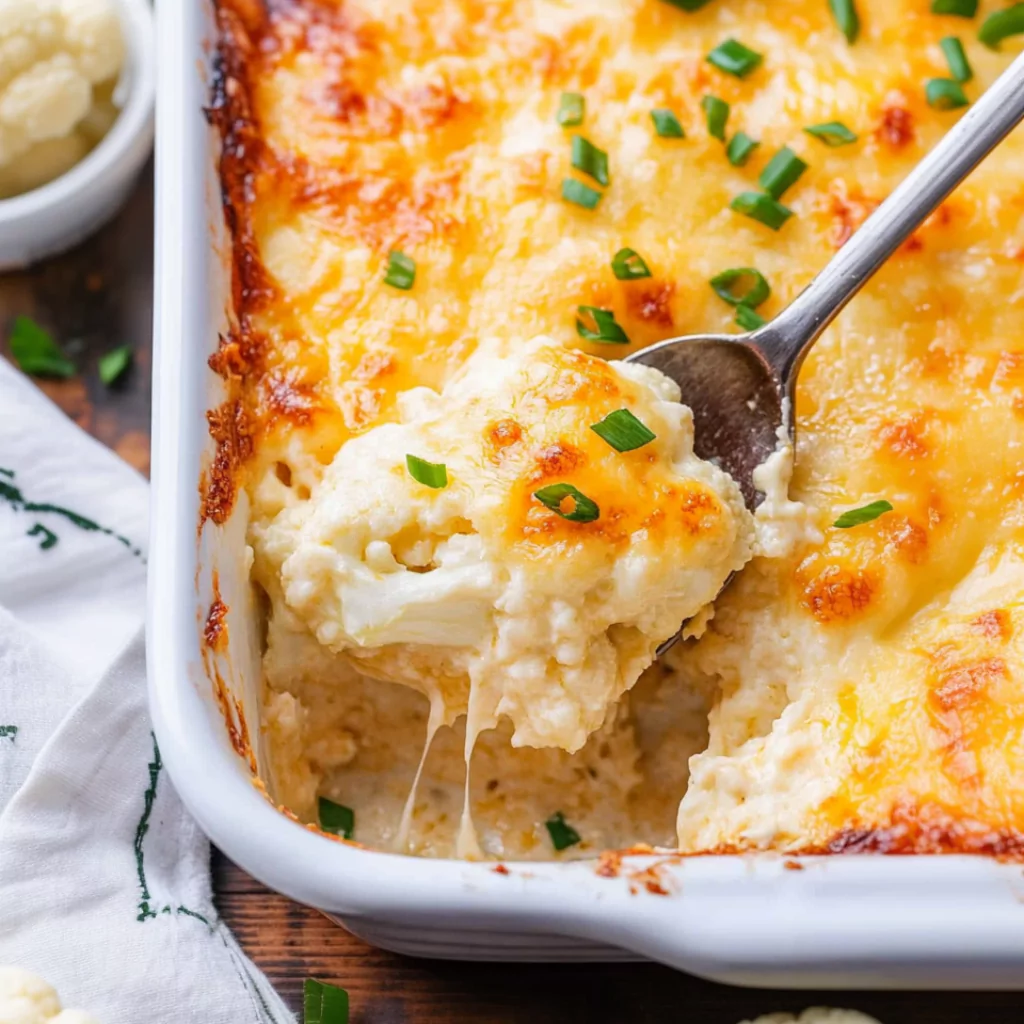
Leave a Comment